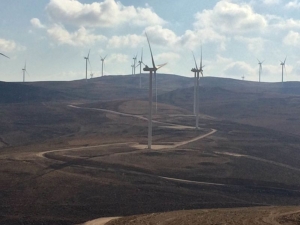Renewable Energy in Jordan Provides Jobs and Opportunity
 The Hashemite Kingdom of Jordan is located in the Middle East in the north of the Arabian peninsula. Founded in 1946 following 28 years under British administration, Jordan is bordered by Syria and Iraq from the north, Saudi Arabia from the south and the West Bank to the west. Recently, having developed a reputation for relative stability, Jordan has become a safe haven for refugees, especially for those fleeing civil war in Syria. Despite a stable middle-income economy, growth remains slow, with youth unemployment estimated as exceeding 30% and traditional work, such as agriculture, stifled by arid conditions. As a result, continued development remains dependent on international aid and investment. The United States and Germany are the biggest national donors.
The Hashemite Kingdom of Jordan is located in the Middle East in the north of the Arabian peninsula. Founded in 1946 following 28 years under British administration, Jordan is bordered by Syria and Iraq from the north, Saudi Arabia from the south and the West Bank to the west. Recently, having developed a reputation for relative stability, Jordan has become a safe haven for refugees, especially for those fleeing civil war in Syria. Despite a stable middle-income economy, growth remains slow, with youth unemployment estimated as exceeding 30% and traditional work, such as agriculture, stifled by arid conditions. As a result, continued development remains dependent on international aid and investment. The United States and Germany are the biggest national donors.
Poverty is also accentuated by the kingdom’s substantial dependence upon other nations for natural resources, such as food and energy, which add to the cost of living. Female-headed households and refugee households tend to be the most vulnerable.
Potential for Accessible Domestic Energy
In 2012, various reforms were enacted in order to provide investment opportunities by establishing standards to incentivize the use of renewable energy in Jordan. As part of a so-called Master Strategy to decrease energy costs and enhance security and accessibility, the Jordanian government sought investments in alternative energy sources, such as solar power, and diversification away from the three main fossil fuels conventionally used, oil, natural gas and fuel oil. These programs have successfully grown Jordan’s renewable energy sector over the course of the past decade, with the quantity of electricity produced from renewable sources growing over 17-fold.
This growth has also given vulnerable demographics, such as those living in refugee camps and those in rural areas not previously serviced, the opportunity to gain access to electricity. At the Zaatari and Azraq refugee camps, dominated by Syrian refugees, electricity is being provided for the first time at no cost to occupants via new solar panel fields. By 2018, the price of renewable energy in Jordan, in particular solar-derived electricity, cost less than half that of electricity produced from oil-derived production.
Challenges
While Jordan currently has the resources required to continue pursuing marked expansion in renewable energy, the rapid rate of growth has illustrated economic challenges in maintaining the government’s projected pace. Renewable energy remains a growing interest amongst nations with smaller developing economies, including the Hashemite Kingdom of Jordan, the majority of businesses and those trained in the installation and design of equipment required for renewable energy use are concentrated in developed economies and larger nations, such as those found in the European Union, as well as the United States, China and Brazil.
In order to address this deficit, investments are needed to train those in the renewable energy sector for the assembly and operation of new energy infrastructure and to provide financial resources to allow electricity operators to invest in new energy resources. Ongoing efforts include the training of young professionals in handling infrastructure for electric cars, new power grids for energy distribution and farms for wind and solar power can help to address long-standing worker shortages.
NEPCO, Jordan’s largest electricity utility services, has received long-term assistance from both the International Monetary Fund and the World Bank in addressing substantial debts owed by the government-owned power generation company and improving efficiency to allow more resources to be directed towards expanding renewable, domestic energy.
Looking Forward
In sum, the Hashemite Kingdom of Jordan has sought to address both structural issues related to poverty, economic opportunity and a transition towards more affordable domestic energy supplies. The ability of renewable energy in Jordan to provide disadvantaged populations, such as those in poverty and refugees, resources like inexpensive electricity and to strengthen economic potential has produced results over the prior decade, with exponential growth evidence of progress towards the government goal of 31% of all electricity.
However, long-term goals of being capable of continued growth without international aid, both from multinational organizations such as the International Monetary Fund and or aid provided by nations such as Germany and the United States, have not yet been achieved, with continued international investment in opportunity to lower youth unemployment, public debt and other challenges still projected as essential for continued progress in reducing poverty.
– Cormac Sullivan
Photo: Wikimedia
